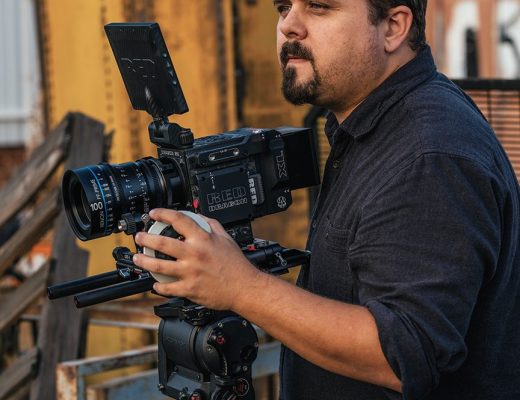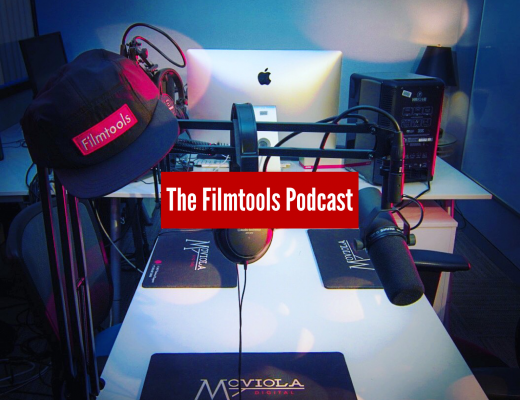With hundreds of careers and opportunities, the filmmaking industry can be a unique experience for a filmmaker. Filmtools decided to take a deeper look into the world of a Filmmaker. This week, we had the opportunity to speak to Filmmaker Connor Hair about his work. This is what he said:

Where are you from?
Originally I am from Kirkland, WA but I moved down to LA 7 years ago.
How did you get interested in Filmmaking?
I’ve been making films since I was 9 years old. Started out just making little action films with my hamster or anyone I could convince to be in them. I was fortunate to have film classes all throughout middle school and high school so that only grew my interest. I’ve always loved films and the process of making them. I enjoy creating stories for people to get lost in.
What inspires you?
I always try and pay close attention to the world around me. I watch little interesting interactions between people in public. Anything that is strange or unique that happens to me I try and keep in it mind for future films. The world is a very interesting place.
What is your role typically on set?
I was a cinematographer for 6 years. After I shifted to directing I found myself either putting to much focus on the visuals of the film and neglecting the performance or putting all my focus on the performance and neglecting the visuals. My natural inclination was to focus on visuals coming from a background in cinematography so I’ve had to work harder to develop my skills with actors. I think I’ve found a good balance of both now. I like to maintain a collaborative stress free environment on set as I believe that’s how everyone does their best work.

How did you break into this industry?
I don’t know if I have broken into the industry yet 🙂 Isn’t that a lifelong battle? I think my most notifiable project so far has been my recent VR film My Brother’s Keeper which I co-wrote and directed with my good friend Alex Meader. PBS Digital Studios and StoryTech Immersive produced the project and we collaborated with Technicolor, and Radiant Images. The project premiered with HTC and Jaunt at Sundance 2017 and is now an Official Selection for Kaleidoscopes 2017 Showcase. We really tried to search for a way to tell cinematic stories in VR/360 with the project and I think we learned a lot from the project about what works and what doesn’t work in VR.
What’s the first thing you do when you arrive to set?
I talk with the DP about the setup. Once that is clear, I’ll find the actors to run through the scene. If they are in makeup I will pace aimlessly looking for something to do. I’m not good at not having something to do on set so I’ll usually just start helping other departments.
How do you balance your work with life?
Good question. My work is so connected with who I am and my life that there is usually very little separation. But I like going camping or exploring nature. I’ve made a habit of only using film cameras when I go on trips because it allows me to be more present. When I have unlimited shots I’ll have my eyes glued to the camera all day. I have a collection of Polaroid cameras to take on adventures. I also love Polaroids because I’m not patient enough to shoot traditional film.
What items do you bring with you to set?
Shot list, Notebook, Script

How important is networking in this field? How do you go out and find these people?
I would say networking is fairly important. I wouldn’t say I am particularly good at networking so I try and surround myself with people who are good at it so they can network for me.
What advice do you give to people working in this industry?
You are going to get knocked down more times than you can count. If you can’t imagine yourself doing anything else, keep at it and things will turn around. Also don’t ever have a big ego. Everything will be easier without one.

How do you deal with challenges on set?
I’ve worked on a lot of low budget projects where you need to be a problem solver every 5 minutes so I’m used to challenges. I try and be very thorough with my shot list and know what I can lose ahead of time so I can adjust to issues on the day. I try and keep a level head no matter what, freaking out doesn’t solve anything and time is always of the essence. If there is a problem I immediately go into problem solver mode. There is no point dwelling on why something went wrong on set, just figure out how you are going to fix it.
Do you have a piece of essential gear that you don’t leave without?
When I was doing cinematography I would never leave with out a gaffers glass. But directing I usually take very little. Just my laptop bag with my script, shotlist, and schedule in it. I always use the Artemis directors viewfinder app on my phone and find it extremely helpful.
I’ve attached some on set photos below. Feel free to choose whichever you think fit the best.
My favorite film I’ve done so far is “Real“.
Trailer: https://vimeo.com/155728481
Where can people follow you on social, or check out your work?
If you want to keep up on what I am working on you can follow my company Perception Squared.
Personal Website: www.ConnorHair.com
Company Website: www.PerceptionSquared.com
Facebook: https://www.facebook.com/perceptionsquared/
Twitter: https://twitter.com/Perception_2
Instagram: https://www.instagram.com/perception_squared/
Vimeo: https://vimeo.com/perceptionsquared
Youtube: https://www.youtube.com/channel/UCT92ltIoMdn3o38YUYL037Q

Want to be featured as a Filmmaker?
Tell us your story to be featured as a Filmmaker online. Reach out to Filmtools via Instagram messages or tag us in your photos on Instagram, Twitter, & Facebook

Filmtools
Filmmakers go-to destination for pre-production, production & post production equipment!
Shop Now













